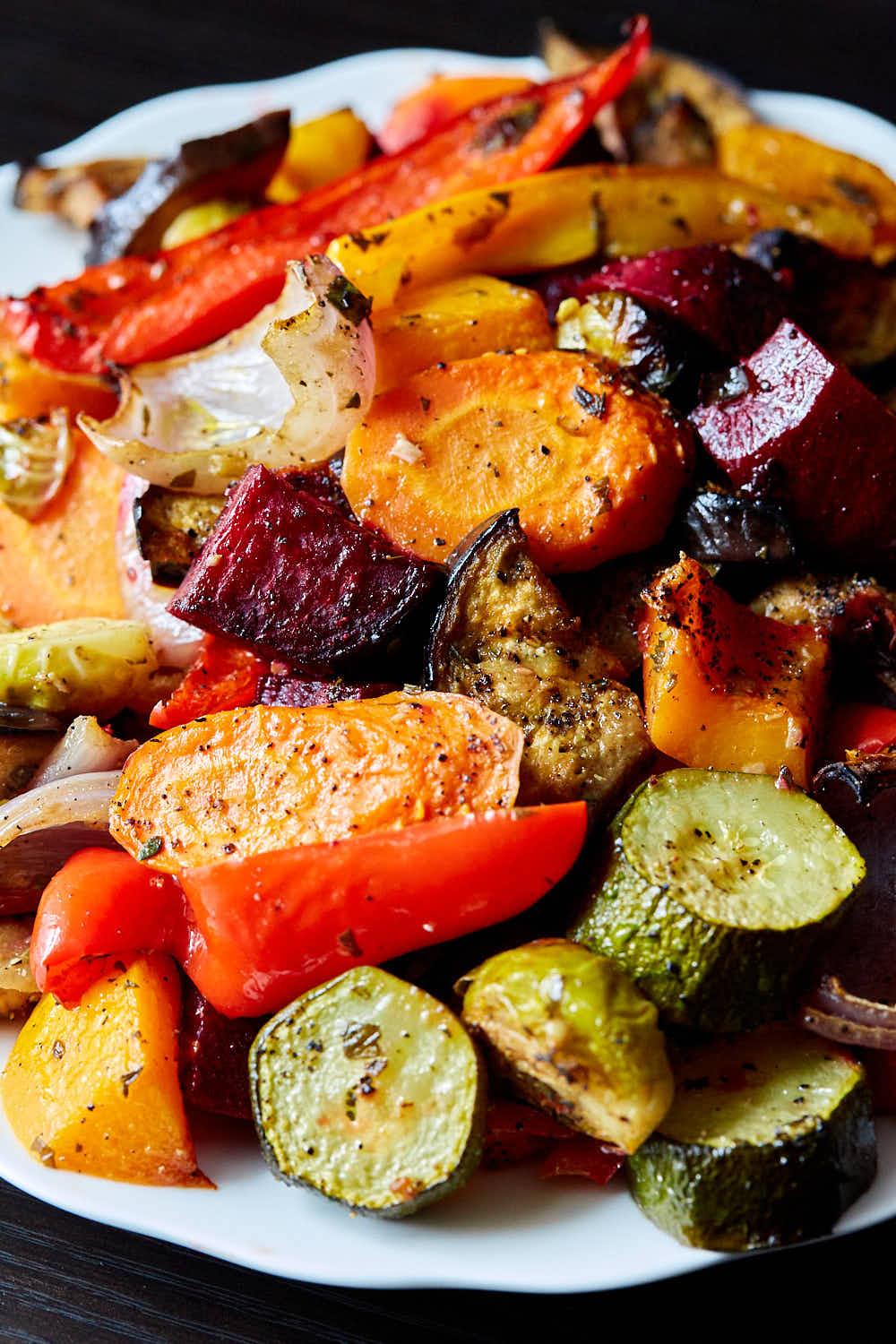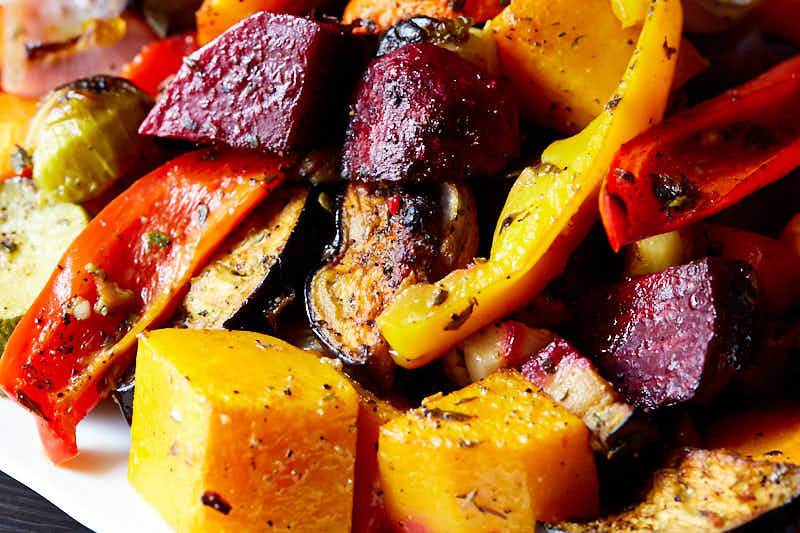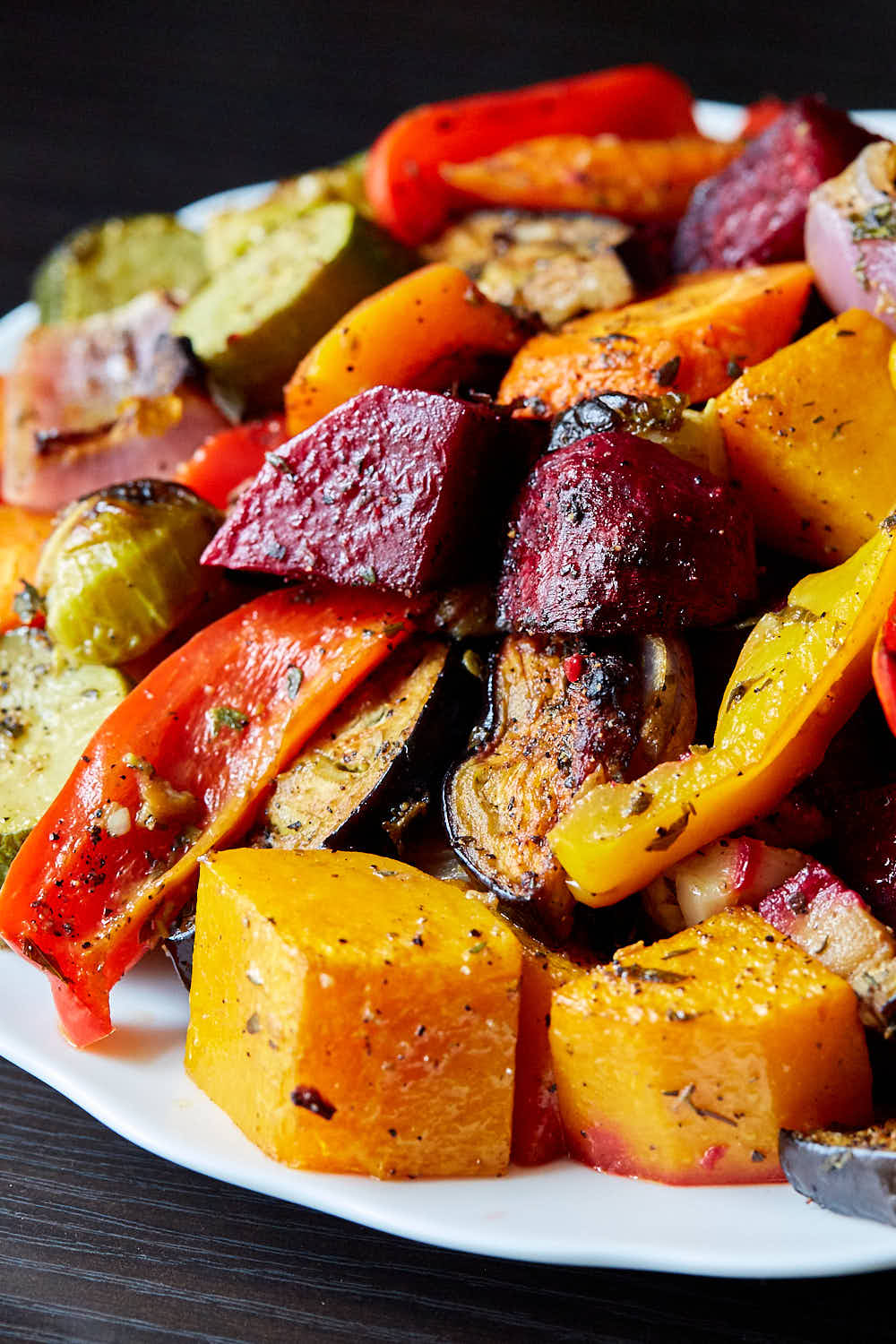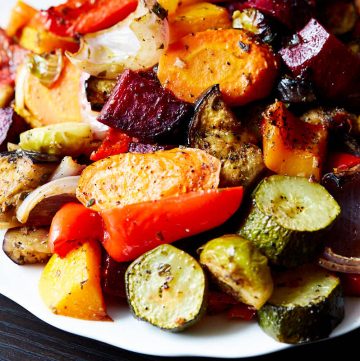Whenever I don’t bring my lunch to work, 8 times out of 10 I would pick up a box of roasted vegetables with a large turkey meatball from the local store’s lunch bar. Let me tell you, those roasted vegetables are really good, albeit quite expensive and have a fairly limited variety. There you can find the usual roasted carrots, green beans, red onions, and potatoes. Occasionally they have sweet potatoes, zucchini and asparagus, but that’s about it. Some of my favorite vegetables to roast are eggplant and Brussels sprouts. Roasted root vegetables rock! They taste great and are full of minerals and vitamins. I love the taste of oven-roasted beets, carrots, yams and parsnips. Throw in some bell peppers for good measure and I am in heaven. Wait, I forgot butternut squash. That’s it. I absolutely adore roasted butternut squash. Roasted butternut squash is seriously delicious! This recipe includes a very good sample of my favorite vegetables. Each time I roast veggies I try to vary them and incorporate what I have on hand. But it’s always a combination of root vegetables and non-root vegetables. Whenever I make this recipe at home it’s always a hit. When I serve these roasted vegetables to guests they always ask me for the recipe. Invariably, it takes them by surprise to learn how simple it is.
My tips for making great roasted vegetables
Variety
No question, the secret to making excellent roasted veggies lies in the variety. A bunch of roasted potatoes, or Brussels sprouts, no matter how well prepared, can never compete with a medley of root and non-root veggies. Here you have softer and crunchier textures, sweet and tart, and a wide range of colors and nutrients, and all the minerals coming especially from root vegetables. And each person can pick whatever veggies they like. Even the pickiest eaters will be happy with these roasted vegetables!
The dressing
Similarly, the dressing makes a huge difference. More often than not I find that store/restaurant roasted veggies are on the sweeter side. To fix that I use a combination of balsamic vinegar and sherry vinegar. I wanted to make the dressing tart enough but without it being overly sweet from using too much balsamic vinegar. Thick dressing is another little secret I learned about during my experiments. Thick dressing sticks to veggies and each piece coming out of the oven is a tasty, perfectly seasoned little morsel.
Fresh herbs
Fresh aromatic herbs like basil and thyme add a lot of flavor too. As does garlic. I use a lot of it, as it loses its pungency during roasting but the flavor remains.
Size
I like to cut vegetables about the same size so that they cook evenly. Dense vegetables like beetroots need to be cut a bit thinner than the rest to cook through in time. Brussels sprouts are a toss – sometimes I cut them in half, sometimes I roast them whole.
Spacing between vegetables
If you can, I recommend using a very large, 15 x 21-inch baking sheet for roasting your vegetables. This will help avoid crowding and let the liquids evaporate quickly, allowing for proper roast. Otherwise, divide the vegetables and roast them in two batches. Leaving more space between the vegetables results in better and faster roasting. Here is the sheet of roasted veggies I made that took only 30 minutes to produce beautifully roasted vegetables. Helpful resources: 6 Common Mistakes to Avoid When Roasting Vegetables How to Roast Any Vegetable



